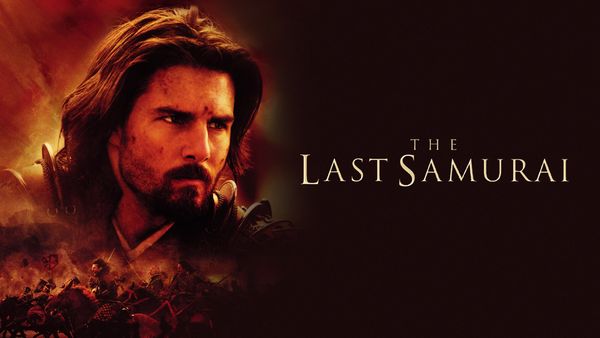The Last Samurai (2003)

“The Last Samurai,” released in 2003 and directed by Edward Zwick, is a sweeping historical epic that immerses viewers in the tumultuous era of late 19th-century Japan. With a star-studded cast led by Tom Cruise, Ken Watanabe, and Timothy Spall, the film explores themes of honor, tradition, and personal transformation against the backdrop of a nation undergoing profound change. Combining breathtaking cinematography, intricate storytelling, and a rich historical setting, “The Last Samurai” stands as a powerful testament to the clash between old and new worlds.
Set in the 1870s, a period of significant transition for Japan as it rapidly modernizes and embraces Western influence, the film follows Nathan Algren (Tom Cruise), a disillusioned American Civil War veteran who is hired to train the newly formed Japanese army. Algren is initially recruited by the Japanese government to help suppress a rebellion led by the Samurai, a traditional warrior class that is struggling to maintain its way of life in the face of modernization.
Algren’s journey begins with him being captured by the Samurai, led by the noble and principled Katsumoto (Ken Watanabe). As he spends time with them, Algren begins to understand and appreciate their values and way of life, which are starkly different from the Western ideals he knows. The film delves into Algren’s internal struggle as he becomes conflicted about his mission and ultimately finds himself aligned with the Samurai cause.
The central conflict of the film is not just the physical battles between the traditional Samurai and the modernizing forces, but also the internal struggle of Algren as he reconciles his past traumas and his evolving understanding of honor and loyalty. The narrative explores themes of cultural clash, redemption, and the personal impact of historical change.

Edward Zwick, known for his work on films such as “Glory” and “Blood Diamond,” directs “The Last Samurai” with a keen sense of historical authenticity and emotional depth. Zwick’s direction is marked by its epic scope and attention to detail, capturing both the grandeur of the film’s battle scenes and the intimacy of its character moments.
Zwick’s ability to convey the emotional and philosophical underpinnings of the story is central to the film’s impact. His direction allows for a nuanced exploration of the characters’ inner lives and the broader historical context, creating a compelling narrative that is both visually stunning and thematically rich.

Tom Cruise delivers a standout performance as Nathan Algren, showcasing his ability to convey complex emotions and character development. Algren’s transformation from a weary and disillusioned soldier to a man who finds purpose and redemption through his experiences with the Samurai is portrayed with depth and sincerity.
Cruise’s portrayal of Algren is marked by a combination of vulnerability and strength. His performance captures the character’s internal conflict and growth, making Algren’s journey from a detached outsider to a committed ally of the Samurai both believable and emotionally resonant. Cruise’s dedication to the role is evident in his physicality and the emotional depth he brings to the character.

Ken Watanabe’s portrayal of Katsumoto, the Samurai leader, is one of the film’s most memorable aspects. Watanabe brings a profound sense of dignity and depth to the role, embodying the spirit and honor of the Samurai tradition. His performance is both powerful and nuanced, capturing the inner conflict and noble resolve of his character.
Watanabe’s chemistry with Cruise enhances the film’s emotional core, as their characters’ relationship evolves from adversarial to one of mutual respect and understanding. Watanabe’s portrayal of Katsumoto adds a layer of authenticity and gravitas to the film, making his character’s struggle and ideals deeply impactful.
“The Last Samurai” is renowned for its stunning cinematography and meticulous attention to historical detail. The film’s visuals, captured by cinematographer John Toll, showcase the beauty of Japan’s landscapes and the grandeur of its historical settings. The sweeping battle scenes and serene depictions of Japanese culture are rendered with a sense of authenticity and respect for the period.
The film’s attention to historical detail extends to its depiction of Samurai culture and the Meiji Restoration. While the film takes creative liberties for dramatic effect, it presents a respectful portrayal of the clash between traditional Japanese values and Western modernization. The depiction of Samurai rituals, combat techniques, and the broader cultural context adds depth and richness to the narrative.
At its core, “The Last Samurai” explores themes of honor, tradition, and personal transformation. The film’s portrayal of the Samurai’s commitment to their way of life and their struggle against a rapidly changing world serves as a poignant reflection on the impact of modernization and the loss of cultural heritage.
The film also delves into themes of redemption and self-discovery, as Algren’s journey mirrors his own quest for inner peace and reconciliation with his past. His relationship with Katsumoto and the Samurai provides a lens through which he confronts his own values and beliefs, ultimately leading to a profound personal transformation.
“The Last Samurai” is a powerful and visually stunning film that combines epic storytelling with deep emotional and thematic exploration. Directed by Edward Zwick and featuring standout performances by Tom Cruise and Ken Watanabe, the film offers a compelling narrative that examines the clash between tradition and modernization in late 19th-century Japan.
With its breathtaking cinematography, historical authenticity, and rich character development, “The Last Samurai” stands as a testament to the enduring appeal of historical epics and the universal themes of honor and personal growth. The film’s exploration of cultural clash, redemption, and the impact of historical change makes it a memorable and thought-provoking addition to the genre, resonating with audiences long after the credits roll.










